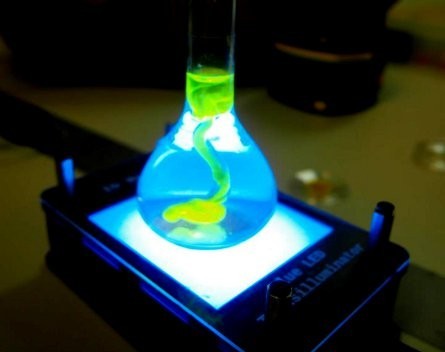
The winning team of Australia’s first-ever biohackathon has been awarded a $3000 cash prize, admitting it came up with the winning solution after 60 initial prototypes prior to the contest.
The biohackathon, organised by technology business incubator ATP Innovations and sponsored by Cochlear, was an eight-hour competition held over the weekend.
A total of 44 participants, divided into 11 teams, were charged with the task of building new and improved methods for the detection of biofilm in a hospital environment.
If undetected, biofilm can result in infection and even death.
The winner of the biohackathon was SurGION, which consists of George Peppou, Ben Millar and Ben Barnes.
Both Peppou and Millar are full-time inventors with backgrounds in biochemistry, immunology and material science. Barnes is a mechatronics engineering student from the University of Sydney.
The winning solution was a monitoring device wrapped in a spiral conductor. The conductor is made of a soluble, bioresorbable polymer doped with conductive particles.
By monitoring variances in the conductive properties of the conductor, the presence of biofilm can be monitored. The device was created after 60 initial prototypes prior to the competition.
A judging panel was looking for the best and simplest solution.

SurGION’s design was chosen for its ability to be incorporated into the surface of indwelling medical devices such as cannulas and catheters – an area not widely addressed.
Under the guidance of industry experts and mentors, SurGION’s conductor was validated as it was found to detect biofilm at an early stage before occurrence of clinical infection.
According to Peppou, the win came as a surprise.
“The competition was very strong and brought a very diverse range of solutions to what remains a challenge within both medicine and industry,” Peppou said in a statement.
“I guess some of our solutions are just crazy enough to work – they’re out there enough that no one has actually tried it but they’re still in the realms of possibility.”
Millar agreed, stating: “What are considered to be ludicrous ideas, if you really work on them, turn out to be not that ridiculous at all.”
Hamish Hawthorn, chief executive of ATP Innovations, said in a statement he was impressed with the scope of the detection methods.
“All the teams came up with very unique approaches, and their passion and enthusiasm was infectious,” he said.
SurGION, which was awarded a $3000 cash prize, is exploring the possibility of commercialising its technology, which, according to the team, has other potential applications.


COMMENTS
SmartCompany is committed to hosting lively discussions. Help us keep the conversation useful, interesting and welcoming. We aim to publish comments quickly in the interest of promoting robust conversation, but we’re a small team and we deploy filters to protect against legal risk. Occasionally your comment may be held up while it is being reviewed, but we’re working as fast as we can to keep the conversation rolling.
The SmartCompany comment section is members-only content. Please subscribe to leave a comment.
The SmartCompany comment section is members-only content. Please login to leave a comment.